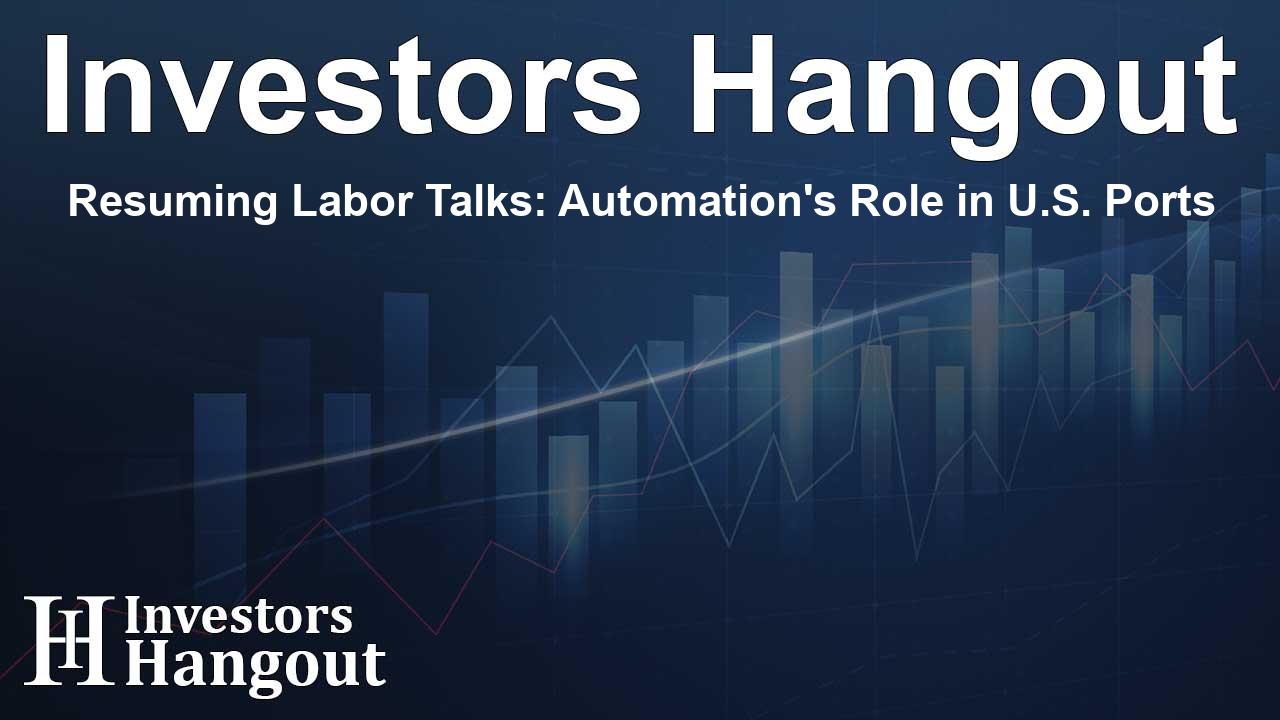Resuming Labor Talks: Automation's Role in U.S. Ports

Labor Negotiations Resume with Focus on Automation
The resumption of contract discussions covering 45,000 dockworkers along the U.S. East and Gulf Coasts highlights the critical issue of automation in port operations. These talks are vital in shaping the future of labor and technological integration in docks ranging from the northernmost to the southernmost points.
Concerns Over Job Security
The International Longshoremen's Association (ILA) is voicing significant concerns regarding past concessions related to automation. They specifically mention semi-automated cranes, which are becoming more prevalent in ports. The union argues that the rise in automation threatens traditional job roles within the workforce.
Employer Perspective on Competitiveness
From the employers' standpoint, represented by the United States Maritime Alliance (USMX), the adoption of rail-mounted gantry cranes is essential for staying competitive. As ports globally, especially in countries like China, push forward with automation, U.S. ports must adapt to keep pace.
Potential Consequences of Failed Negotiations
Failure to reach an agreement by a specific deadline could lead to serious repercussions, including a potential strike at key container ports. The impact of such work stoppages could reverberate through the shipping industry, significantly affecting both trade and costs.
Reflection on Past Decisions
Historically, port employers persuaded previous ILA leadership that implementing semi-automated cranes would lead to an increase in jobs. However, as these cranes replaced traditional equipment, the anticipated job growth did not materialize, raising alarm within the ranks of dockworkers.
Automation's Impact on Dock Capacity
The introduction of cranes capable of handling larger stacks of containers has improved operational efficiencies. However, they also raise concerns regarding workforce reductions, given their ability to operate with minimal human input during off-hours. The union remains adamant about requiring contract language that explicitly prohibits increased automation that would jeopardize dockworker positions.
Economic Considerations
Employers argue that modern technology enhances cargo movement efficiency while simultaneously creating new job opportunities. They emphasize that a well-executed automation strategy can support economic growth while protecting the current workforce's interests.
Looking Beyond Automation
Port executives and union leaders are exploring alternative ways to enhance efficiency. They propose collaborative data sharing to better align staffing with incoming cargo demands and advocate for cranes that can lift multiple containers simultaneously.
The Complexities of Automation
While automation has proven effective in manufacturing sectors, the complexities involved in port operations can limit its effectiveness. Major U.S. ports, characterized by fluctuating cargo volumes, may find that automated systems do not offer the flexibility required to respond to market demands effectively.
Conclusion: A Balanced Approach Needed
The landscape of U.S. ports is at a crossroads where labor negotiations will determine the extent of technology's integration into daily operations. It is crucial to find a balance that respects the rights and security of the dockworkers while also positioning ports for competitive success in the global marketplace.
Frequently Asked Questions
What is the main issue in the labor negotiations?
The primary issue revolves around the impact of automation on jobs, with the ILA opposing further concessions that would allow for increased automation at U.S. ports.
How many dockworkers are involved in the negotiations?
Approximately 45,000 dockworkers are part of these labor talks encompassing the East and Gulf Coasts.
What are the employers' arguments for automation?
Employers argue that adopting modern technology is essential for enhancing port efficiency and keeping U.S. ports competitive on a global scale.
What are the potential consequences of a strike?
A strike could disrupt operations at key container ports, leading to increased shipping costs and prolonged cargo backlogs.
How has automation affected jobs in the past?
Past automation initiatives, like the use of semi-automated cranes, were expected to create jobs but instead raised concerns about job losses among dockworkers.
About The Author
Contact Caleb Price privately here. Or send an email with ATTN: Caleb Price as the subject to contact@investorshangout.com.
About Investors Hangout
Investors Hangout is a leading online stock forum for financial discussion and learning, offering a wide range of free tools and resources. It draws in traders of all levels, who exchange market knowledge, investigate trading tactics, and keep an eye on industry developments in real time. Featuring financial articles, stock message boards, quotes, charts, company profiles, and live news updates. Through cooperative learning and a wealth of informational resources, it helps users from novices creating their first portfolios to experts honing their techniques. Join Investors Hangout today: https://investorshangout.com/
The content of this article is based on factual, publicly available information and does not represent legal, financial, or investment advice. Investors Hangout does not offer financial advice, and the author is not a licensed financial advisor. Consult a qualified advisor before making any financial or investment decisions based on this article. This article should not be considered advice to purchase, sell, or hold any securities or other investments. If any of the material provided here is inaccurate, please contact us for corrections.
